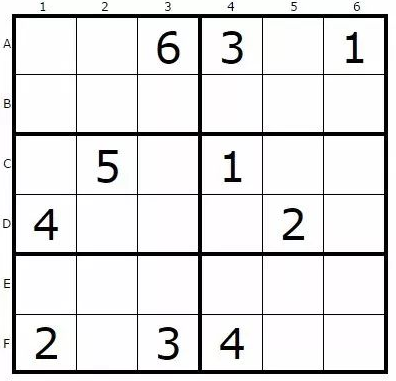Researchers have studied eye-tracking and home videos fornew insights
研究人员已经研究了眼动追踪和家庭视频以获得新的见解

Babies begin to learn words and what they mean well before they begintalking, and researchers are beginning to understand how they do it.
在开始说话之前,婴儿就已经开始学习单词及其意义,研究人员开始了解他们是如何做到。
双语阅读
"I thinkit's especially intriguing that we find evidence that for infants, even theirearly words aren't 'islands': even with a very small vocabulary they seem tohave a sense that some words and concepts are more 'similar' than others,” Dr.Elika Bergelson from Duke University, Durham, North Carolina told by email.“While they still have a lot to learn before they show adult-like or eventoddler-like levels of comprehension, this gives us a peek into how those earlywords and concepts are organized.”
“我觉得尤其有趣的是,我们发现有证据表明,对于婴儿来说,即使他们早期的词汇并没有”成群结队“:即使他们词汇量很小,似乎可以感知有些词汇和概念比其他词汇和概念更“似曾相识””,北卡罗来纳州达勒姆的杜克大学的Elika Bergelson博士通过电子邮件告诉记者:”虽然婴儿在能显示出成人般甚至像蹒跚学步的孩子的理解水平之前还有很多东西需要学习,因此,我们开始窥探到早期的词语和概念是如何组织起来的。
True word learning requires making connections between speech and theworld around us and learning how different words relate to each other.
真正的单词学习需要在言语和我们周围的世界之间建立联系,并学习不同单词如何相互关联。
Bergelson's team studied 6-month-old babies to see whether they recognizedthese connections, as opposed to merely recognizing words in isolation.
伯杰尔森的研究小组研究了6个月大的婴儿,研究婴儿是否认识到这些联系,而不是仅仅孤立地认识单词。
Using eye tracking, the researchers found that infants lookedsignificantly more at pictures of named objects (“car,” for example) when theobjects were paired with unrelated objects (like a picture of a car with apicture of juice) than when the objects were paired with related objects (likea picture of a car with a picture of a stroller).
研究人员使用眼动追踪技术发现,看已知名称物体时,婴儿更多的会看不相关的物体(如汽车上有果汁的图像)而非相关物品(如带有婴儿车图片的汽车图片)。
Infants, the authors suggest, “may know enough about a word’s meaning totell it apart from the unrelated referent but not the related one. . . . Thatis, perhaps infants know ‘car’ cannot refer to juice, but not whether strolleris in the ‘car’ category.”
研究作者们认为,婴儿可能对一个词的含义足够了解,可以将其与无关的指称区分开来,却无法分辨相关的指称词… 也就是说,也许婴儿知道“车”不能指果汁,但是不知道婴儿车是否在“汽车”类别。
Using home video recordings, the researchers also observed that theinfants learned to recognize words better when they could see the objects asthe words were being used (for example, when they were told, "here's yourspoon," when the spoon was actually present).
研究人员使用家庭视频记录观察到,当婴儿看到被使用的单词时(例如,勺子真实存在时,有人说“这是你的勺子”),他们可以更快学会识别单词)。
“Treat your baby like a real conversationalpartner,” she said. “Even young infants are listening and learning about wordsand the world around them before they start talking themselves, and theircaregivers make that possible.”
她说:“把你的婴儿当成真正的对话伙伴。”即使是刚出生的婴儿,在他们开始自言自语之前,他们都在倾听和学习关于他们的文字和世界,照顾婴儿的人会让这些成为可能。
Dr. Dana Suskindfrom the University of Chicago, who has studied ways to help parents enrichinfant language development but who wasn’t involved in this research, told byemail, "From my standpoint, this work continues to reaffirm the criticalimportance of early and intentional parent language and interaction from dayone and that learning doesn't start on the first day of school but the firstday of life!”
芝加哥大学的Dana Suskind博士曾经研究过如何帮助父母丰富婴儿语言,但是并没有参与这项研究,他通过电子邮件告诉记者:“从我的观点来看,这项工作继续重申至关重要的意义,学习是从父母早期有意识的语言互动的第一天开始,学习不是从生命的第一天开始的!
科技词汇
Eye-tracking 眼动追踪
Insights 见解
Intriguing 有趣的
Concept 概念
Toddler 珊珊学步的孩童
Isolation 隔绝
Paired 配对
Stroller 婴儿车
Conversational 对话的
Caregiver 给予照顾者
Infant 婴儿
Standpoint 立场
Intentional 故意的
Interaction 互动
互动问答
本期:迷你数独
每个谜题都由一个在不同位置给与提示数字的4x4或6x6网格组成。游戏的目的是将空方格填上数字1到4(对于4x4大小的谜题)或者1到6(对于6x6的谜题),使得每一行,每一列以及每一个宫都没有重复的数字出现。


本期难度:Diabolical
(答案见下期)
注:数独是一种源自 18 世纪末的瑞士数学家欧拉所创造的拉丁方块游戏。传数独源起于拉丁方阵( Latin Square ), 1970 年代在美国发展,改名为数字拼图( Number Place )、之后流传至日本并发扬光大,以数学智力游戏智力拼图游戏发表。在 1984 年一本游戏杂志《パズル通信ニコリ》正式把它命名为数独,意思是“在每一格只有一个数字”。后来一位前任香港高等法院的新西兰籍法官高乐德( Wayne Gould )在 1997 年 3 月到日本东京旅游时,无意中发现了。他首先在英国的《泰晤士报》上发表,不久其他报纸也发表,很快便风靡全英国,之后他用了 6 年时间编写了电脑程式,并将它放在网站上,使这个游戏很快在全世界流行

